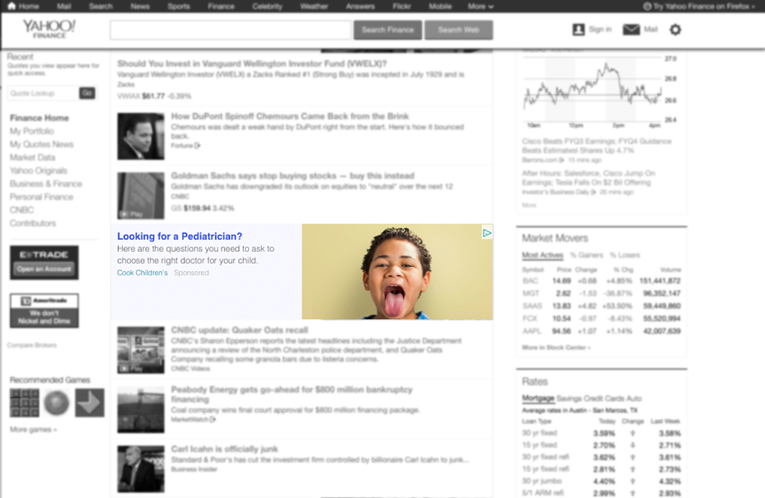What Is Native Advertising – and Should You Use It?
Friday, August 5, 2016
by Stephanie Orges
Marketing
What Is Native Advertising – and Should You Use It?
Native advertising is like advertorial. You write a blog post or make a video using content people will want to read or watch. Then, you pay to have that post or video published (or simply promoted) on a website like Yahoo – usually on a cost-per-click basis.
- Also known as: Sponsored content, branded content
- Is a type of: Content marketing, digital advertising
- Why it’s called “native”: It looks like it naturally belongs in the environment

Why should you use native advertising?
- It raises brand awareness. It’s a noninvasive way to get your brand name in front of people. Kind of like product placement in TV or movies, except instead of paying to have your product included in the entertainment, you’re creating the entertainment that includes your product.
- It positions your brand as an expert resource. It’s a chance to offer some of your industry expertise for free. It can be a funny top 10 list, a science-backed lifehack, or even a compelling testimonial.
How should native advertising be written?
Stop thinking like a salesperson, and start thinking like an entertainer or a journalist. Look for something new, surprising or useful (or all three) to say. Sales need to take a backseat to the story. For instance:
- Lifehacks
- Not: “How Sharp Brand Knives make cooking easier”
- Instead: “The easy way to keep your kitchen knives sharp”
- Studies
- Not: “Fluffy Brand Toilet Paper leaves competitors behind”
- Instead: “New study reveals most absorbent toilet paper”
- Lists
- Not: “10 reasons to fly Pangaea Air”
- Instead: “10 reasons your next vacation should be in Pangaea”
- Testimonials
- Not: “Med Brand saved my life”
- Instead: “I was given 6 months to live – 2 years ago.”
See the difference? Your first responsibility is to provide valuable content to the reader. Then you’ve earned enough trust to add a link at the bottom with a “By the way, we make knives, and they stay sharp for a really long time.”
How not to do native advertising
The potential problem with native advertising is that it can feel deceptive; no one wants to go to a movie and end up watching an infomercial instead. Here’s how to keep your readers happy:
- Don’t portray yourself as unbiased. Thinking like a journalist doesn’t make you one, so be transparent about who you are (a brand) and what you want (customers).
- Don’t make it a sales pitch. Transparent doesn’t mean pushy. Readers should know who you are, but be pleasantly surprised when, instead of pushing a product, you offer info they can use even without buying something.
- Don’t skimp on the follow-through. Bait-and-switch is not cool, and it will only hurt your brand reputation. So make sure the content you’re linking to has real substance, and lives up to the hype of the hook.
Need help creating great native content? We do that.